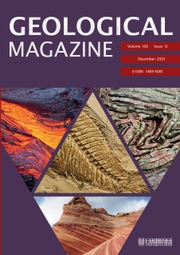Article contents
VII.—Notes on the Altered Coniston Flags at Shap
Published online by Cambridge University Press: 01 May 2009
Extract
The alteration undergone by the Coniston Flags, owing to the intrusion of the Shap granite, has been well and fully described by Messrs. Harker and Marr in their most able and interesting paper, read before the Geological Society in the spring of this year, “The Shap Granite and the Associated Igneous and Metamorphic Rocks” (Q.J.G.S. vol. xlvii. 1891).
I have worked a great deal, microscopically, on the rocks of this district, both before and since the publication of the results of Harker and Marr, and this work has enabled me in a special manner to appreciate the quality and value of their investigations in this complicated and interesting region. I was so fortunate, two summers ago as to spend some time at Shap with Mr. Marr, who most kindly assisted me to understand some of the problems involved, and pointed out to me the places where specimens of special interest could be collected.
- Type
- Original Articles
- Information
- Copyright
- Copyright © Cambridge University Press 1891
References
page 462 note 1 These crystals, when best developed, are about ![]() inch long. The form is that of a tetragonal pyramid, either simple or showing also prism-faces in narrow bands. In some of the later specimens there are large clusters consisting almost wholly of perfect, or nearly perfect crystals.
inch long. The form is that of a tetragonal pyramid, either simple or showing also prism-faces in narrow bands. In some of the later specimens there are large clusters consisting almost wholly of perfect, or nearly perfect crystals.
page 462 note 2 These fragments of sedimentary rock are of various slates and grits. Some are very micaceous and chloritic, not very quartzy, full of “clay-slate needles,” and not altered in any way. They are like many common types of slates. Others are very quartzy, more like the flags at Wasdale Beck, but even richer in quartz. The alteration of part of these is shown by formation of some of the “regenerated” quartz, and in some cases brown mica is formed, though this is not much developed, a white mica in good-sized flakes being more usual. It is in these altered, more quartzy, grits or flags, or whatever they may be best called, that the anatase crystals are seen.
- 1
- Cited by


